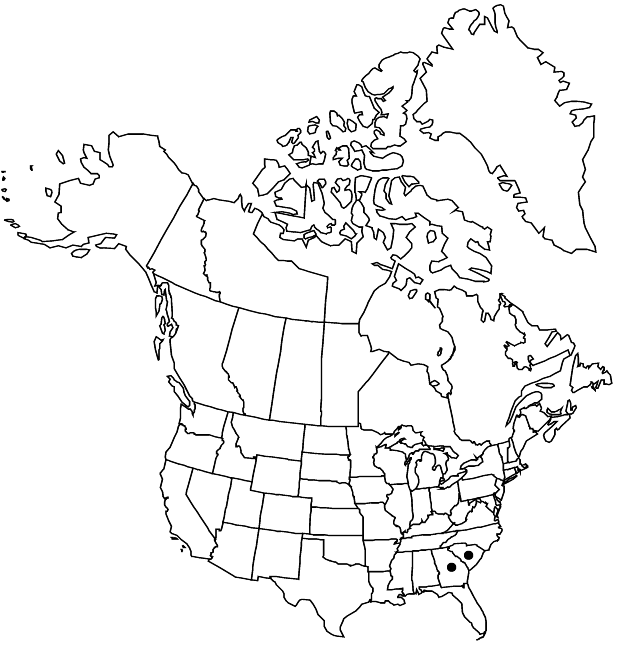Elliottia racemosa
Sketch. Bot. S. Carolina 1: 448. 1817 ,.
Shrubs or trees, (2–) 3–5 (–12) m, spreading by root suckers; older twigs with gray, furrowed bark, twigs of current season green, with both appressed and spreading, stiff hairs. Leaves alternate; petiole 6–14 mm; blade ovate to elliptic, 5–12 × 2–4.5 cm, base cuneate, margins flat, apex acute to acuminate, mucronate, abaxial surface sparsely hairy, especially on veins, adaxial surface green. Inflorescences terminal, (10–) 40–80-flowered racemes or panicles (branches to 5 cm), (5–) 10–20 (–28) cm; bracts (deciduous before anthesis), scalelike, linear to ligulate, 2–3 mm, margins ciliate. Pedicels 10–20 mm, with 2 deciduous, minute bracteoles proximally. Flowers: calyx lobes 5, broadly deltate, 1–1.5 × 1–1.2 mm, apex subacute, with short, stiff hairs; corolla 4–5-lobed, petals white, narrowly elliptic to spatulate, 9–10 (–14) mm; stamens 10; filaments 4–5 mm, glabrous; anthers 0.7–1 mm; style (not persisting in fruit), straight to slightly curved (not recurved), 7–10 mm. Capsules oblate-spheroidal, 4–5-parted, 7–12 mm wide, inconspicuously verrucose. Seeds ca. 50–100, 2–2.5 mm. 2n = 22.
Phenology: Flowering late spring–early summer.
Habitat: Sunny to partly shady conditions on sand ridges, oak ridges, evergreen hummocks, and sandstone (rarely siliceous limestone) outcrops
Elevation: 0-100(-200) m
Discussion
Of conservation concern.
Although Elliottia racemosa is rare and localized, it occurs in a wide variety of sandy soil conditions ranging from moist to extremely dry (T. S. Patrick et al., www.georgiawildlife.com). About 70 sites are known in Georgia, and one historic site in South Carolina. The locations in Georgia are mostly within the Altamaha-Ogeechee-Savannah river drainage system. The leaves turn an attractive bright red in autumn. Georgia-plume has been in cultivation since 1813, and is hardy as far north as New England. It is considered to be difficult to grow and prone to fungal diseases (R. Determan, pers. comm.).
Selected References
None.
Lower Taxa
"/4" is not declared as a valid unit of measurement for this property.
